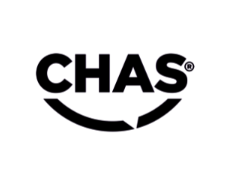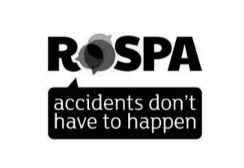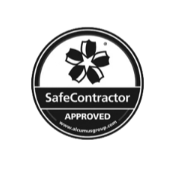phs Group has acquired Citron Hygiene UK - we’re here to support you. Read our customer FAQs and find our contact details here.
Most women experience some form of period pain. For more than 57% of women, the pain can be so intense, it impacts their work. And while period pain can be uncomfortable and distracting, it is a normal and common symptom to experience during your period.
Finding ways to reduce period cramps can help make your period more manageable, stopping your time of the month from affecting your life. Explore some of the ways you can reduce period cramps below.
What are period cramps?
Period or menstrual cramps, also known as dysmenorrhea, are a common menstrual symptom. They are caused by the contraction of the womb, which occurs as it sheds its lining during menstruation. The cramps can range from mild to severe, and can be felt in the lower back or abdomen, while some experience pain in their thighs and pelvic region too.
Period cramps can be accompanied by other symptoms, including nausea, bloating, headaches and fatigue. Cramps can vary in severity from person to person, and they may not be experienced every month. This inconsistency can make it difficult to plan ahead for pain management, or can happen unexpectedly, which can impact a sufferer’s day-to-day activities.
Causes of period cramps
Period cramps are caused by a tightening of the womb’s muscular wall, also known as a ‘contraction.’ The womb contracts regularly, but most cramps go unfelt by women.
During your period, your womb gets ready to shed its lining. The lining is pushed out through contractions, compressing the blood vessels in the womb. During this time, this area loses blood and oxygen supply, and your body responds by releasing chemicals that cause pain.
Meanwhile, your body also produces chemicals called prostaglandins, which can increase these contractions, and make the pain feel worse.
Unfortunately, it’s not clear why some women experience more pain than others. It could be due to some people having more prostaglandins, leading to stronger contractions and accompanying pain.
Lifestyle changes to reduce period cramps
Dealing with period pain can be miserable, but there are some lifestyle changes you can make that could help reduce the intensity of pain you experience.
Exercise
While you may not feel like exercising during your period, it can actually help in many ways. Exercise helps to relieve endorphins, your feel-good hormones, which can help reduce pain, while it could also help alleviate bloating and headaches too.
Try some light exercise like walking, swimming or cycling to help you get moving.
Changes to your diet
Your diet could help you relieve some of your symptoms of cramps. Some of the things you can do to help alleviate your symptoms include:
- Upping your water intake. Some studies have shown that women who increased their water intake during their period suffered from less severe cramps compared to those who didn’t.
- Herbal teas such as chamomile and ginger could help relieve cramps, as well as other symptoms such as nausea.
- Eating fruits and vegetables, including bananas and oranges, are packed with vitamins that can help give you some relief from your symptoms.
- Green foods like broccoli and kale are rich in magnesium and calcium, and could help you relieve some of your symptoms. They are also rich in iron, which can help replace some of the iron your body loses during menstruation.
- Avoid fatty and salty foods, as well as alcohol, caffeine and fizzy drinks that could cause bloating and worsen your symptoms.
Manage your stress levels
Stress and your period can be a vicious cycle. Your period can cause you stress, but stress can also make some of your period symptoms worse, including your cramps.
Try to reduce your stress levels as much as possible around your period. Yoga, Pilates and meditation can all be effective in helping to reduce your stress and could help you manage pain and other symptoms too.
Remedies to reduce period cramps
In addition to lifestyle changes, there are other remedies you can try as a way to reduce your period cramps. From natural remedies to over-the-counter medication, there may be some methods you find effective in dealing with your cramps.
What Helps Cramps on Period: 3 Effective Solutions – Natural, Over-the-Counter, and Alternative Remedies
Natural remedies
There are a lot of different methods that women use to deal with menstrual cramps. Some of the most popular include:
- Massaging your abdomen to help ease tension and help your symptoms.
- Try heat therapy using a hot water bottle or a heat pad.
- Have a hot bath.
Over-the-counter medication
Some over-the-counter medications can be effective at relieving period cramps. Medication such as ibuprofen and other anti-inflammatories can help reduce the pain. These medications help to lower prostaglandin, helping to ease cramps altogether or make them more bearable.
Alternative remedies
Some women turn to alternative therapies to help deal with period pains. Some of the most popular include:
- Acupuncture, which has been shown to have positive effects to reduce period pain.
- Chiropractic care, which can help ease some of the back pain that can be worsened by menstrual cramps. Many women experience positive experiences of using a chiropractor to relieve period pains.
- Using a TENS (transcutaneous electronic nerve stimulation) machine, which sends small electrical pulses to your abdomen to help relieve pain.
When to see a doctor
Period pains are a normal symptom to experience during your period, but if you have any concerns, make an appointment with your GP. If something changes from your usual menstrual cycle or you suffer from severe period pain, an appointment with your GP can help figure out the cause and provide a solution to help ease your cramps.
Staying comfortable during your period
Dealing with period pains can be frustrating, but it’s important to do what you can to help you have a comfortable period. Having access to period products is one way to help you feel more comfortable and help you feel fresh during your period.
At phs, we’re working with partners to help tackle period poverty and ensure everyone has access to the products they need. Find out more about the work we’re doing or speak to an expert about how you can get started with providing support in your school, college or workplace.

































